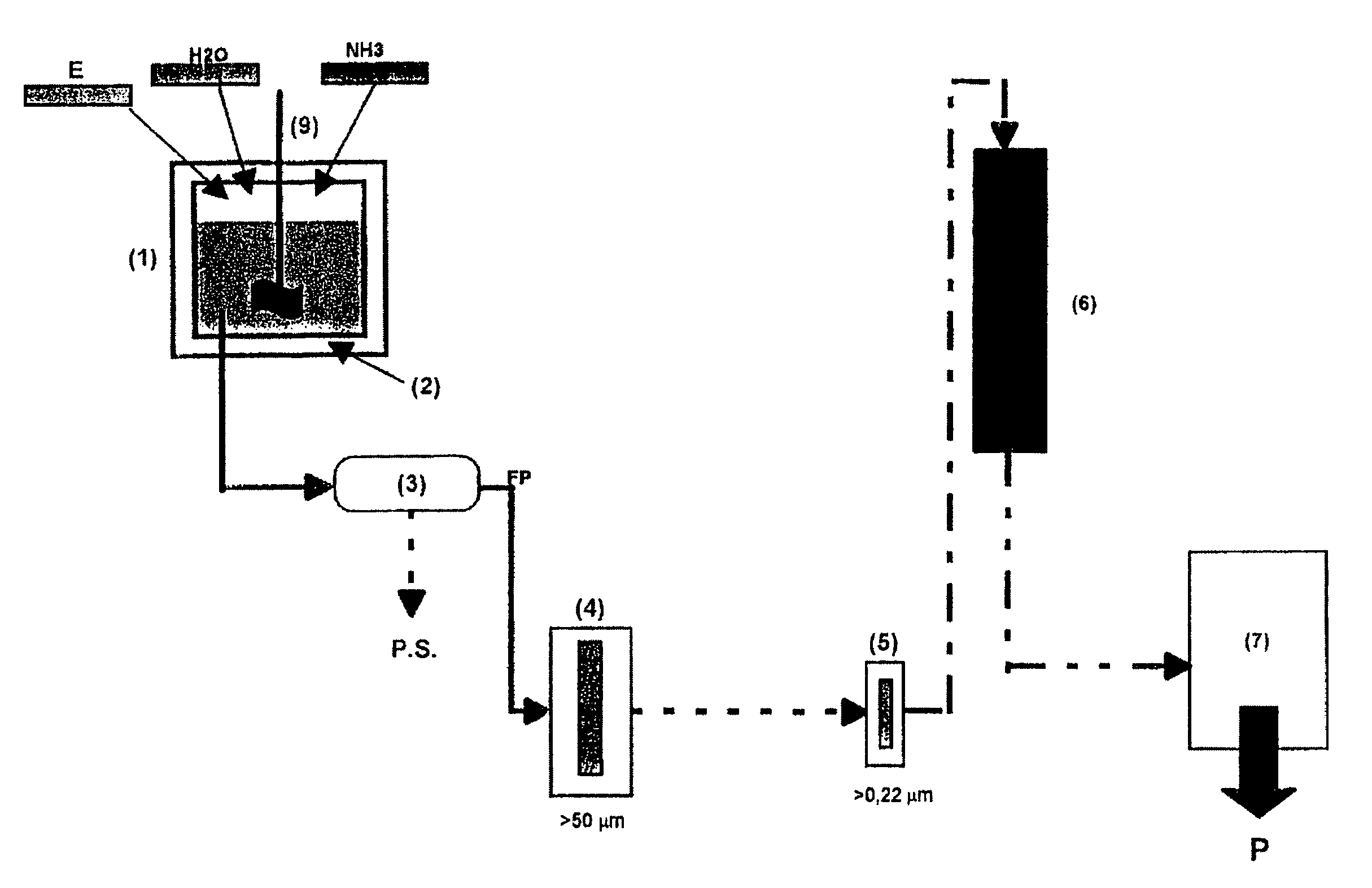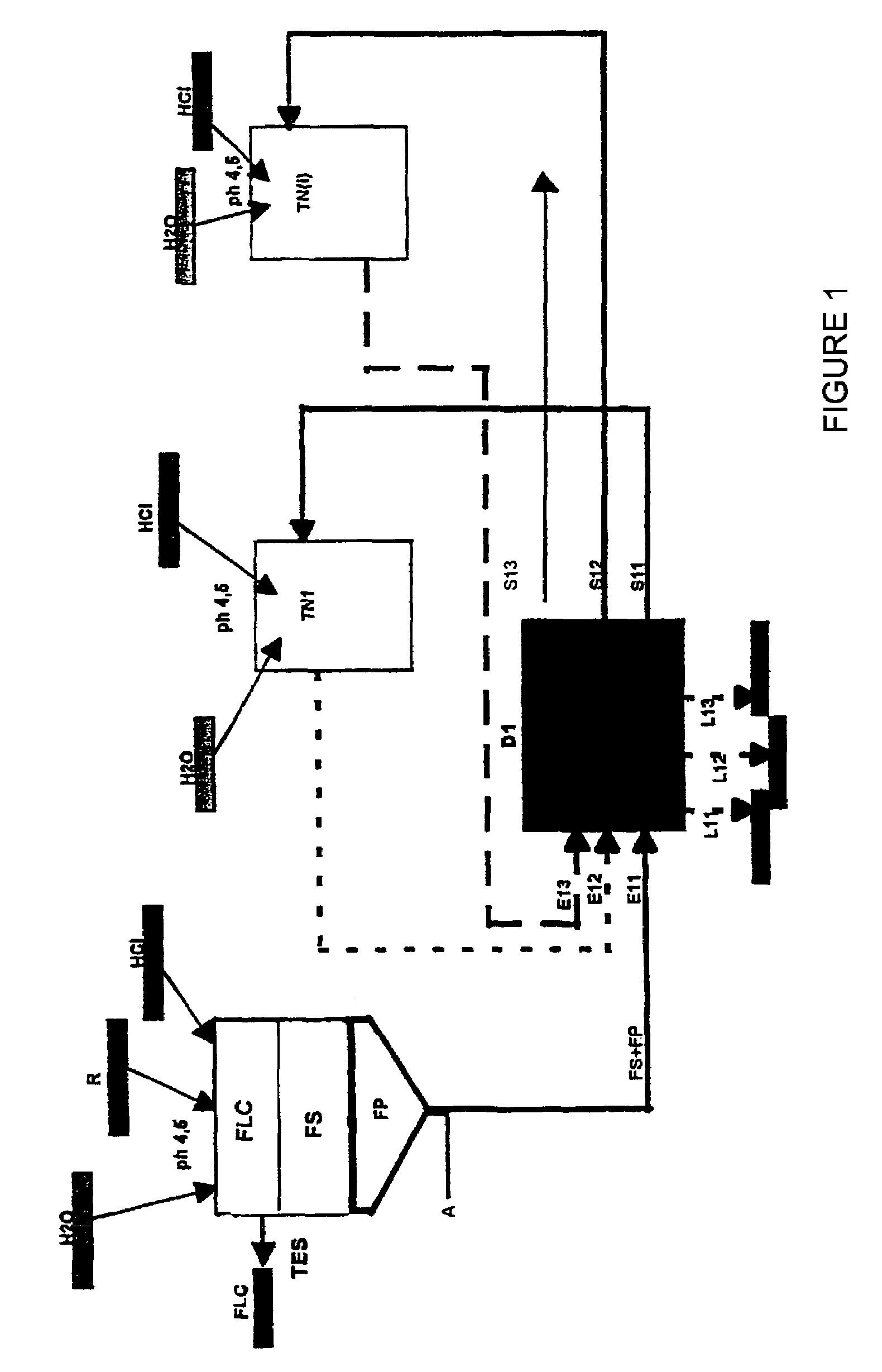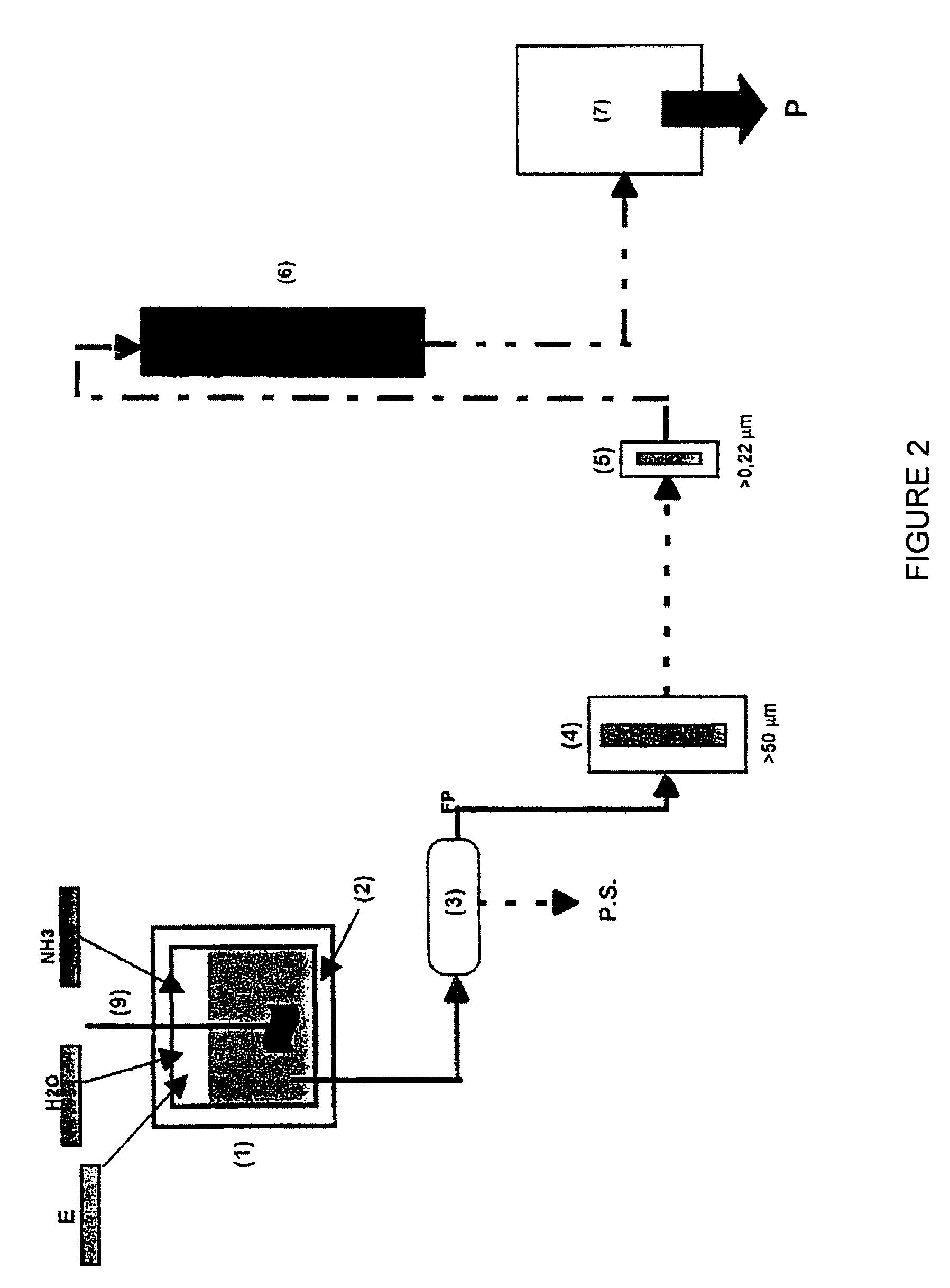Continuous direct enzymatic protein solubilization process for industrial wastes
a technology of enzymatic protein and industrial waste, which is applied in the field of continuous direct enzymatic protein solubilization process of industrial waste, can solve the problems of direct use, insufficient protein physical properties, and waste of resources,
- Summary
- Abstract
- Description
- Claims
- Application Information
AI Technical Summary
Benefits of technology
Problems solved by technology
Method used
Image
Examples
example 1
Degreased Flours from Oilseeds
[0046]This is obtained by extraction with solvents and by pressure (prepress-solvent extraction) from oilseeds, mainly sunflower and rape, which leads to the generation of degreased flours with a high protein content (≈30%).
[0047]The approximate chemical composition of said waste is detailed below. The values slightly vary depending on the production batch.
[0048]
Composition of degreased sunflower oil (%)Moisture10Proteins30.5Ashes9.5FatSugars / Fiber58.5
example 2
Wastes from the Fermentations Industry
[0049]The wastes used as raw materials are those produced by the bioalcohol industry. In said process, a waste is produced that comes from both cereals (barley, wheat) and corn, whose composition is detailed.
[0050]Said by-products come from the enzymatic treatment (thermo-amylases), with the subsequent extraction and conversion of their sugared component into free sugars and their subsequent conversion into alcohol by means of alcoholic fermentation.
[0051]The final resulting waste is suitable for the direct protein solubilization process.
example 2.1
Wheat Wastes
[0052]The approximate chemical composition of said waste is detailed below. The values slightly vary depending on the production batch.
[0053]
Chemical composition %Moisture10.0Ashes5.5Proteins32.0Fats5.8Sugars / Fiber46.7
PUM
| Property | Measurement | Unit |
|---|---|---|
| pH | aaaaa | aaaaa |
| pH | aaaaa | aaaaa |
| pH | aaaaa | aaaaa |
Abstract
Description
Claims
Application Information
 Login to View More
Login to View More - R&D
- Intellectual Property
- Life Sciences
- Materials
- Tech Scout
- Unparalleled Data Quality
- Higher Quality Content
- 60% Fewer Hallucinations
Browse by: Latest US Patents, China's latest patents, Technical Efficacy Thesaurus, Application Domain, Technology Topic, Popular Technical Reports.
© 2025 PatSnap. All rights reserved.Legal|Privacy policy|Modern Slavery Act Transparency Statement|Sitemap|About US| Contact US: help@patsnap.com



